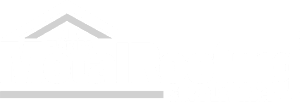Why Businesses are Choosing PBR & R Panels for Commercial Buildings
In the ever-evolving world of commercial construction, businesses are continuously seeking efficient, cost-effective, and durable solutions for their building needs. Among the various options available in the market today, PBR (Purlin Bearing Rib) & R Panels have emerged as a popular choice for commercial buildings. This rise in popularity can be attributed to several key factors, including their durability, ease of installation, cost-effectiveness, and versatility.
Understanding PBR & R Panels
PBR & R Panels are a type of metal roofing and siding panel system. The 'R' in R Panels stands for 'Ribbed', which refers to the ribbed pattern across the panel. PBR Panels, on the other hand, are a more specific type of R Panel, where the 'Purlin Bearing' leg design offers greater support. These panels are widely recognized for their strength and durability, making them an excellent choice for commercial and industrial buildings.
Durability and Longevity
One of the most significant advantages of PBR & R Panels is their durability. Made from high-quality metals, these panels are designed to withstand harsh weather conditions, which is a crucial consideration for commercial buildings that need to endure the elements. They are resistant to wind, rain, and even fire, making them an exceptionally safe choice. Furthermore, these panels are known for their longevity. A well-installed PBR or R Panel system can last for decades with minimal maintenance, making them a long-term investment for any business.
Cost-Effectiveness
For any business, budgeting is a critical factor in decision-making. PBR & R Panels are cost-effective not only in terms of initial installation but also in long-term maintenance and energy costs. Their reflective properties can lead to significant savings in cooling costs, a benefit particularly noticeable in warmer climates. Moreover, the ease of installation translates into lower labor costs, further adding to their cost-effectiveness.
Versatility in Design
Commercial buildings often require a balance between functionality and aesthetics. PBR & R Panels offer a range of colors, finishes, and designs that can be tailored to meet specific architectural needs. This versatility allows businesses to maintain a professional, modern appearance while benefiting from the functional advantages of metal paneling.
Ease of Installation
The installation process of PBR & R Panels is relatively straightforward, which is a significant advantage for commercial construction. These panels are lightweight, easy to handle, and can be installed quickly, reducing the time and labor involved in the construction process. This faster installation time is beneficial for businesses as it minimizes downtime and allows commercial facilities to become operational more rapidly.
Energy Efficiency
In today's environmentally conscious world, energy efficiency is a critical consideration. PBR & R Panels contribute to better insulation of buildings, maintaining internal temperatures and reducing the need for extensive heating and cooling. This not only leads to a reduction in energy consumption but also aids in creating a more comfortable environment inside the building.
Maintenance
Low maintenance is a key benefit of PBR & R Panels. They do not require frequent repairs or replacements, which is often a significant concern with other roofing and siding materials. Their ability to resist corrosion and fading reduces the need for regular maintenance, which can be a costly and time-consuming process.
Sustainability
Sustainability is a growing concern in all sectors, including construction. PBR & R Panels are often made from recycled materials and are themselves fully recyclable, making them an environmentally friendly option. This aligns with the growing trend of green building practices and helps businesses reduce their environmental footprint.
Application in Various Industries
The adaptability of PBR & R Panels extends to a wide range of industries. From manufacturing facilities and warehouses to retail centers and office buildings, these panels are versatile enough to meet various structural and aesthetic needs. This broad applicability makes them a go-to choice for many sectors.
Conclusion
The selection of PBR & R Panels for commercial buildings reflects a well-informed decision based on numerous benefits. Their durability, cost-effectiveness, versatility, ease of installation, energy efficiency, low maintenance, and sustainability make them an ideal choice for businesses looking to invest in a reliable, long-term solution for their building needs. As the commercial construction industry continues to evolve, the popularity of PBR & R Panels is likely to grow, further cementing their status as a top choice for commercial applications.
In conclusion, businesses choosing PBR & R Panels for their commercial buildings are making a smart investment. These panels not only offer immediate benefits in terms of cost and installation but also ensure long-term savings and sustainability, making them an ideal choice in the modern commercial construction landscape.

